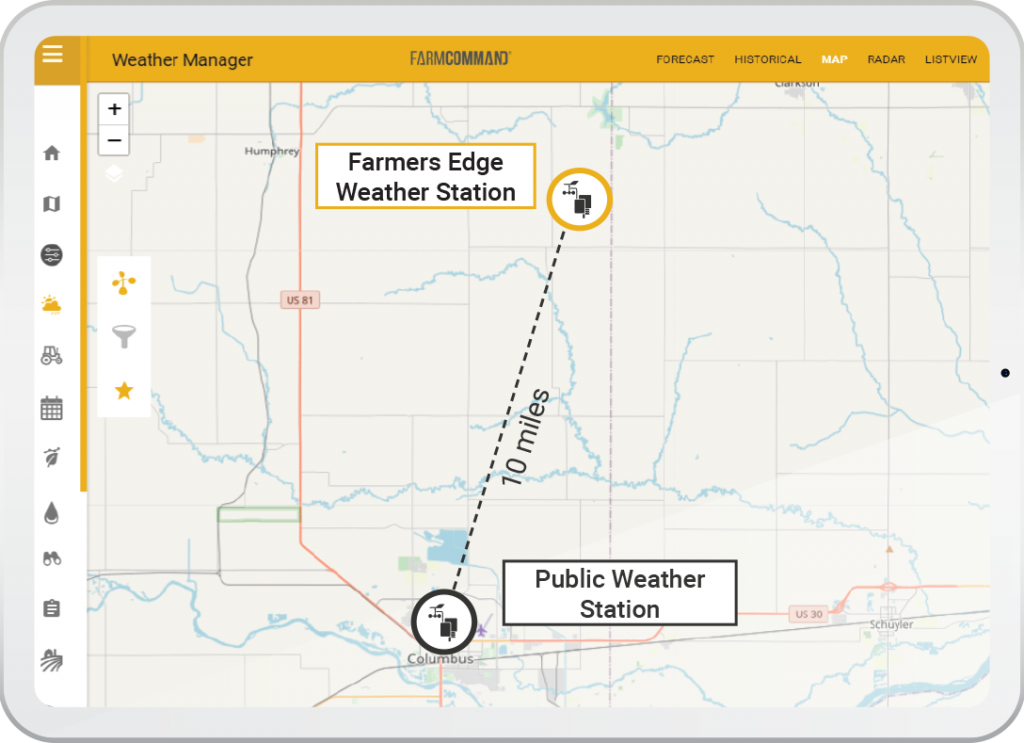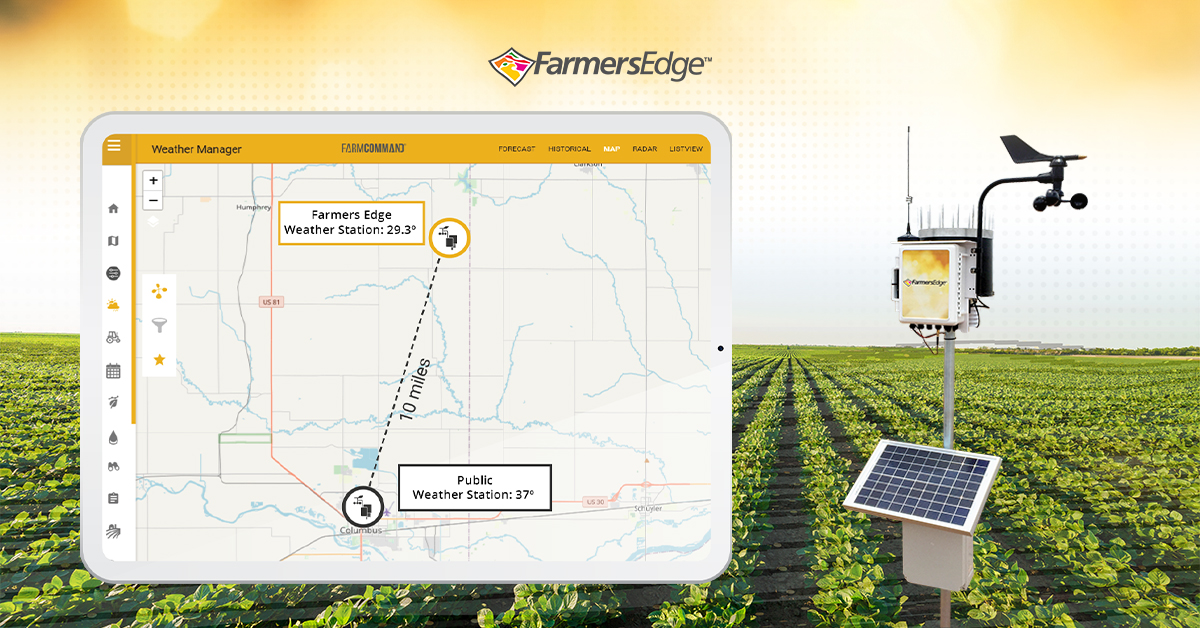Farmers Edge installs weather stations across the farm, making up the largest advanced private weather network. With field-centric weather captured daily, you’ll know the current, forecasted and historical conditions for a particular farm, for any day. This is especially valuable for identifying when below freezing temperatures occurred on a farm, determining frost risk and assessing possible damage. As demonstrated by the example below, the lowest temperatures recorded by the Farmers Edge weather station and public weather station varied significantly. Access to this field-centric weather data in FarmCommand, a comprehensive digital platform, enables growers to make more informed farm management decisions and equips insurers with information to mitigate risk and simplify claims.

Comparing weather data from a public weather station to a Farmers Edge on-farm weather station located 10 miles away demonstrates the impact distance has on weather data accuracy.
May 9 – The temperature recorded at the public weather station was nearly 5 degrees lower than on the farm.
May 10 – The temperatures dipped below freezing on the farm, but the public data didn’t even reach freezing temperatures.
May 11 – There was a 7.8° difference in temperature lows between the two stations. The farm experienced below freezing temperatures, but the public weather station data does not reflect those conditions. That is a significant difference.

Field-centric data ensures accuracy and when it comes to crop insurance, growers and insurers alike agree it’s not something they can afford to take a guess on. Contact us for more information on how you can get started on using our digital tools to help support your decision-making, minimize risk and maximize growing potential.

